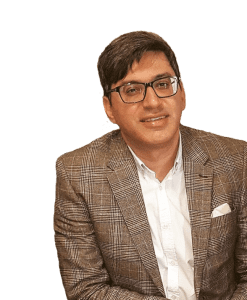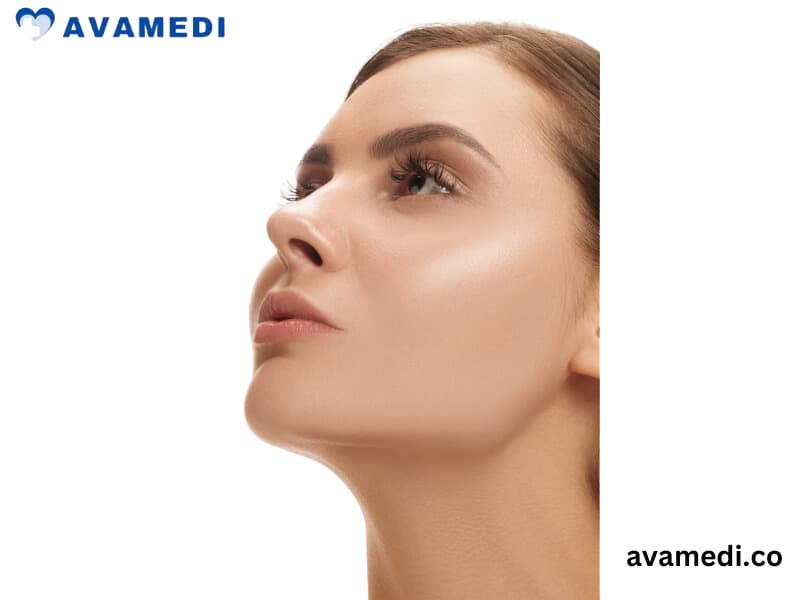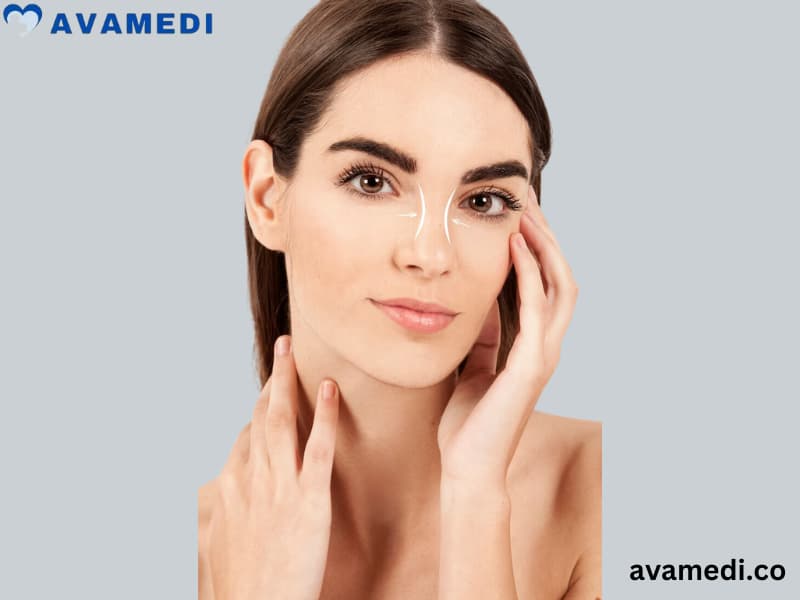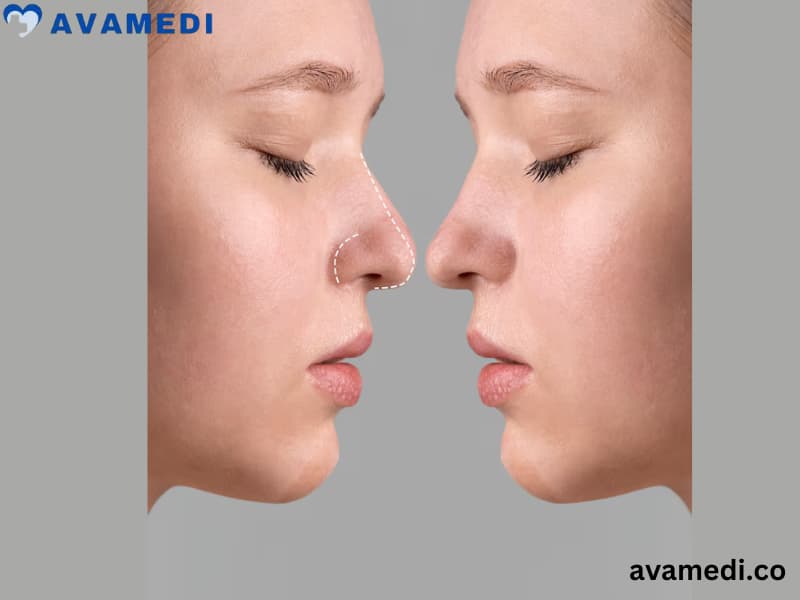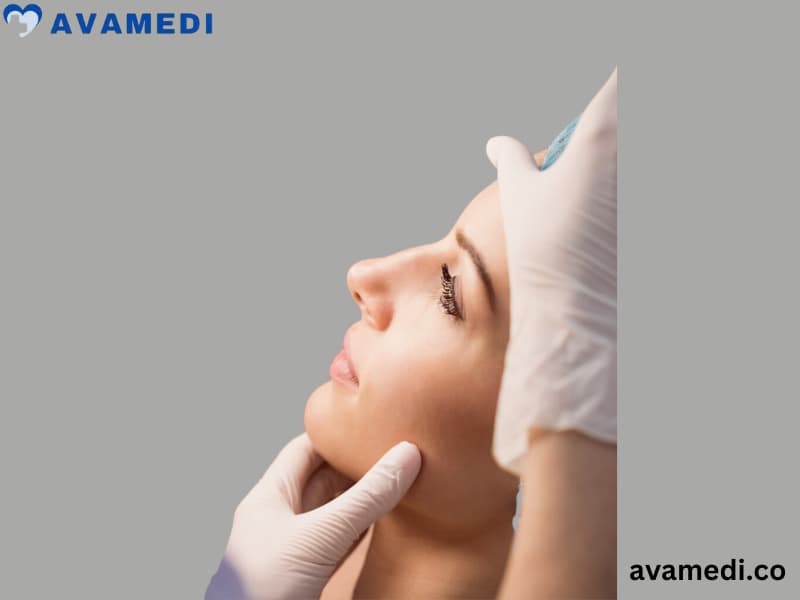What is Preservation Rhinoplasty?
Preservation rhinoplasty is a specialized approach within the field of plastic surgery that focuses on preserving the natural anatomy and function of the nose while addressing aesthetic concerns. Unlike traditional rhinoplasty, which often involves extensive tissue removal and restructuring, this rhinoplasty aims to maintain the integrity of the nasal structures.
This innovative technique emphasizes the importance of retaining the underlying nasal framework, including cartilage and bone, to achieve more natural and sustainable results. this surgery is particularly beneficial for patients seeking subtle refinements to their nasal appearance without sacrificing the overall functionality and structural stability of the nose.
The key principles of preservation nose job involve careful analysis of the patient’s unique nasal anatomy, precise surgical planning, and a meticulous surgical approach that minimizes trauma to the tissues. By prioritizing preservation, this technique seeks to avoid complications associated with extensive tissue disruption, such as loss of nasal support, breathing difficulties, and long-term aesthetic issues.
Ultimately, preservation nose job represents a contemporary and patient-centered approach to nasal surgery, offering individuals the opportunity to enhance their facial harmony and aesthetics while maintaining the natural characteristics of their nose. As with any surgical procedure, consultation with a qualified and experienced plastic surgeon is essential to determine the suitability of preservation nose job based on individual goals and anatomy.
Avamedi offers multiple other services such as Nose job in Iran.
What is Preservation Rhinoplasty?
Preservation nose job is an advanced surgical technique in the field of plastic surgery specifically tailored to maintain the natural structure and functionality of the nose while addressing cosmetic concerns. Unlike traditional rhinoplasty procedures that often involve significant tissue removal and restructuring, this rhinoplasty seeks to preserve the underlying nasal framework, including cartilage and bone.The primary objective of preservation nose job is to achieve aesthetic improvements while minimizing disruption to the nasal tissues. This approach emphasizes a meticulous and precise surgical process, aiming to retain the integrity of the nasal anatomy. By doing so, preservation nose job aims to prevent complications associated with traditional methods, such as loss of nasal support, breathing difficulties, and long-term aesthetic issues.
This technique involves a thorough analysis of the patient’s unique nasal anatomy, followed by careful surgical planning to address specific cosmetic concerns while maintaining the natural contours of the nose. Preservation rhinoplasty is particularly suitable for individuals who desire subtle changes to their nasal appearance without compromising the overall function and stability of the nose.
Click (The Ultimate Guide to Nose Job in Iran or Turkey) to read the article.
Avamedi offers multiple other services such as revision rhinoplasty in Iran.
Preservation Rhinoplasty in Iran
Iran is known for its significant presence in the field of cosmetic and plastic surgery, including rhinoplasty. Rhinoplasty is a popular cosmetic procedure in the country, and Iranian surgeons have gained recognition for their expertise in this area. Preservation nose job, with its focus on maintaining the natural structure of the nose, aligns with the principles of achieving aesthetically pleasing results while preserving functionality.
Individuals seeking this rhinoplasty in Iran would typically follow a similar process as in other countries. This involves consulting with qualified and experienced plastic surgeons who specialize in rhinoplasty. During the consultation, patients discuss their goals, and the surgeon evaluates the unique nasal anatomy to determine the feasibility and suitability of preservation rhinoplasty.
It’s essential to choose a board-certified and reputable surgeon, and thorough research on clinics and surgeons is crucial. Patient reviews, before-and-after photos, and credentials of the medical professionals can help individuals make informed decisions.
Please note that medical practices and trends can evolve, so it’s recommended to check with updated sources or directly consult with healthcare professionals in Iran for the latest information on this surgery and cosmetic surgery practices.
Click (Nose filler danger zones) to read the article.
Preservation Rhinoplasty Cost
The cost of “preservation rhinoplasty” can vary widely depending on several factors, including the geographic location, the reputation and experience of the surgeon, the complexity of the procedure, and the specific requirements of the patient. In general, preservation rhinoplasty may be more intricate and time-consuming than traditional rhinoplasty, which can influence the overall cost.
On average the cost of preservation rhinoplasty, can cost anywhere from 5,000 USD to 10,000 USD. This cost typically covers various elements, such as the surgeon’s fees, anesthesia, facility fees, pre-operative and post-operative care, and any necessary follow-up appointments.
It’s crucial to keep in mind that the cost of rhinoplasty can vary significantly from one region to another. In countries where medical and surgical costs are generally higher, the procedure may be more expensive. Additionally, the surgeon’s expertise and reputation can contribute to the overall cost.
When considering the cost of preservation nose job, it’s important to consult with experienced and board-certified plastic surgeons to obtain accurate estimates based on individual needs and goals. During the consultation, the surgeon can assess the complexity of the procedure and provide a personalized cost estimate.
Prospective patients should also inquire about what the quoted cost includes and if there are any additional fees. Some surgeons may offer financing options to help make the procedure more accessible to patients.
Remember that seeking high-quality care from a qualified professional is crucial for a successful outcome, so choosing a surgeon based on expertise and reputation is just as important as considering the cost.
Click (Guide to Bulbous Nose Tip Surgery Recovery) to read the article.
Preservation Rhinoplasty Cost in Iran
The cost of preservation rhinoplasty in Iran starts from 3,000 USD and can go up to 3,500 USD. In Iran, rhinoplasty is a popular cosmetic surgery, and the country is known for its skilled plastic surgeons. The cost of preservation rhinoplasty in Iran may be influenced by the complexity of the procedure, the surgeon’s experience, the clinic’s facilities, and additional factors.
To obtain accurate and current information on the cost of preservation nose job in Iran, it’s recommended to directly contact reputable plastic surgery clinics or consult with qualified plastic surgeons. They can provide personalized assessments, discuss the details of the procedure, and offer specific cost estimates based on individual needs.
When considering cosmetic surgery abroad, including in Iran, it’s crucial to prioritize the qualifications and reputation of the surgeon and the clinic to ensure a safe and successful outcome. Additionally, inquire about what the quoted cost includes, and if there are any additional fees or post-operative care considerations.
Remember that medical practices and pricing can change, so seeking updated information directly from reputable sources is essential for making informed decisions about preservation rhinoplasty in Iran.
Click (How to get rid of bulbous nose tip naturally?) to read the article.
Preservation Rhinoplasty vs. Rhinoplasty
Preservation rhinoplasty and traditional Rhinoplasty represent two distinct approaches to nasal surgery, each with its own set of principles and goals. Here’s a comparison between the two:
Objective:
- Preservation Rhinoplasty: The primary goal is to make aesthetic improvements to the nose while preserving the natural nasal structures, such as cartilage and bone, to maintain function and stability.
- Traditional Rhinoplasty: Focuses on reshaping the nose by removing, rearranging, or augmenting nasal tissues to achieve the desired aesthetic outcome.
Technique:
- Preservation Rhinoplasty: Emphasizes a more conservative approach, minimizing tissue disruption and preserving the existing nasal framework.
- Traditional Rhinoplasty: Involves more extensive tissue removal, restructuring, and sometimes the use of implants or grafts to achieve the desired shape.
Tissue Handling:
- Preservation Rhinoplasty: Seeks to minimize trauma to nasal tissues, avoiding unnecessary removal of cartilage or bone.
- Traditional Rhinoplasty: May involve substantial tissue manipulation, which can impact the natural support and function of the nose.
Recovery:
- Preservation Rhinoplasty: Generally associated with a potentially shorter and less uncomfortable recovery period due to the more conservative approach.
- Traditional Rhinoplasty: Recovery may involve more swelling and discomfort, and the complete healing process can take a longer time.
Natural Results:
- Preservation Rhinoplasty: Aims to achieve more natural-looking results by maintaining the patient’s original nasal anatomy.
- Traditional Rhinoplasty: Results can be highly effective but may involve more noticeable changes to the natural nasal structure.
Suitability:
- Preservation Rhinoplasty: Often suitable for individuals who desire subtle changes to their nasal appearance without sacrificing function.
- Traditional Rhinoplasty: Can be suitable for a wide range of aesthetic goals, including more significant alterations to nasal shape.
Click (What are Middle Eastern nose features?) to read the article.
Preservation Rhinoplasty Procedure
Preservation rhinoplasty is a surgical procedure designed to enhance the aesthetic appearance of the nose while preserving the natural structure and function of its underlying tissues. The following outlines the general steps involved in a preservation rhinoplasty procedure:
- Before the surgery, the patient meets with the plastic surgeon for a comprehensive consultation. The surgeon evaluates the patient’s nasal anatomy, discusses the individual’s goals and expectations, and determines the suitability of preservation rhinoplasty.
- The surgeon develops a personalized surgical plan based on the patient’s anatomy and cosmetic objectives. Preservation rhinoplasty often involves a more conservative approach to maintain the integrity of the nasal structures.
- Preservation rhinoplasty is typically performed under general anesthesia to ensure the patient’s comfort and safety during the procedure.
- In some cases, the surgeon may harvest small amounts of cartilage or bone from other areas of the body, such as the septum or ear, to be used as grafts for structural support or augmentation during the rhinoplasty. In certain preservation rhinoplasty cases, the surgeon may opt to use the patient’s own fat obtained through liposuction to add volume to specific areas of the nose, contributing to a more natural appearance.
- The surgeon makes small incisions, often inside the nostrils or along the natural creases of the nose, to access the nasal structures. Using precise techniques, the surgeon reshapes the nasal cartilage and bone to achieve the desired cosmetic outcome.
- Preservation rhinoplasty focuses on maintaining the natural contours of the nose.
If autologous grafts were harvested, they are strategically placed to provide support, structure, or augmentation as needed.
- The incisions are meticulously closed with sutures, and if dissolvable sutures are used inside the nostrils, they do not require removal.
- After the procedure, patients are monitored in a recovery area before being discharged. Follow-up appointments are scheduled to assess healing, remove any external sutures (if used), and address any concerns.
Click (Nose Tip Lift with Botox) to read the article.
Preservation Rhinoplasty Technique
Preservation rhinoplasty is a surgical technique that focuses on making aesthetic improvements to the nose while preserving the natural anatomy and functionality of its underlying structures. The technique involves a more conservative approach compared to traditional rhinoplasty. Key steps include a thorough patient assessment aligning expectations, meticulous preoperative planning tailored to individual features, general anesthesia for patient comfort, strategic incisions to minimize scarring, limited tissue dissection to preserve nasal support, sculpting existing cartilage and bone for structural changes, potential use of autologous grafts or fat grafting for added support or volume, precise suture techniques for reshaping, and postoperative care instructions for a quicker recovery compared to traditional rhinoplasty.
Preservation Rhinoplasty Recovery
The recovery process after preservation rhinoplasty is generally characterized by a quicker and potentially less uncomfortable experience compared to traditional rhinoplasty. Here’s an overview of what patients can expect during the recovery period:
- Following preservation rhinoplasty, patients are monitored in a recovery area to ensure their well-being as they awaken from anesthesia. Any immediate discomfort or pain is managed with prescribed medications.
- Swelling and bruising around the nose and eyes are common in the initial days after surgery. However, preservation rhinoplasty typically results in less swelling than traditional rhinoplasty, contributing to a quicker recovery.
- Nasal splints or dressings may be applied to support the reshaped nose and maintain its new structure. These are usually removed within the first week after surgery.
- Patients may experience mild discomfort, and pain medication prescribed by the surgeon helps manage any postoperative pain. Most individuals find that any discomfort diminishes rapidly in the days following the procedure.
- Preservation rhinoplasty is often associated with a shorter downtime compared to traditional rhinoplasty. Many patients can return to their normal activities, excluding strenuous exercise, within a relatively short timeframe.
- Depending on individual healing rates and the nature of the patient’s work, many individuals can return to work or social activities within a week or two. This is, however, subject to the surgeon’s recommendations.
- Patients typically have follow-up appointments with their surgeon during the first week and subsequent weeks after the procedure. These appointments allow the surgeon to monitor the healing process, address any concerns, and remove any remaining sutures or dressings.
- While the majority of swelling resolves within the first few weeks, some residual swelling may persist for several months. The final results of preservation rhinoplasty become more apparent as the swelling continues to diminish.
- Full recovery and the achievement of the final results may take several months. Patients are advised to be patient and follow their surgeon’s postoperative care instructions to optimize the healing process.
Conclusion
In conclusion, preservation rhinoplasty emerges as a specialized and patient-centered approach in plastic surgery, prioritizing both aesthetic enhancements and the preservation of the nose’s natural anatomy. By focusing on careful patient assessment, meticulous planning, and a surgical technique that minimizes tissue disruption, preservation rhinoplasty aims to provide sustainable and natural-looking results. This contemporary method, emphasizing the retention of the nasal framework, stands in contrast to traditional rhinoplasty, offering individuals an opportunity for subtle refinements without compromising functionality.
In comparing preservation rhinoplasty to traditional rhinoplasty, the former’s conservative approach stands out, seeking to avoid complications associated with extensive tissue disruption. The procedure’s steps, from patient consultation to postoperative care, highlight a commitment to maintaining natural contours and functionality. While costs may vary based on factors like geographic location and surgeon expertise, prospective patients are encouraged to prioritize the qualifications of their chosen surgeon for optimal outcomes.
Ultimately, preservation rhinoplasty signifies a contemporary evolution in nasal surgery, offering individuals the chance to harmonize their facial aesthetics while preserving the intrinsic beauty and functionality of their nose. In the event that you want to explore more about preservation rhinoplasty, consider contacting Avamedi Health Group. We are at your service, ready to be your personal assistant and offer comprehensive insights.
Source:NIH
FAQ
- Is preservation rhinoplasty better?
Preservation rhinoplasty often yields significantly more satisfying results for patients, reducing the likelihood of requiring revision rhinoplasty.
- How long does preservation rhinoplasty last?
The outcomes of preservation rhinoplasty have the potential to endure throughout a person’s lifetime. In comparison to other nose surgeries, many individuals perceive that preservation rhinoplasty results may have an extended lifespan, given the reduced risk of future complications such as tissue or cartilage collapse.
- What are the disadvantages of preservation rhinoplasty?
Drawbacks: Preservation rhinoplasty may not be suitable for everyone. Patients with intricate nasal deformities might need traditional structural techniques for optimal results, and individuals with exceptionally thick skin or soft tissue and cartilage may find it less suitable.










